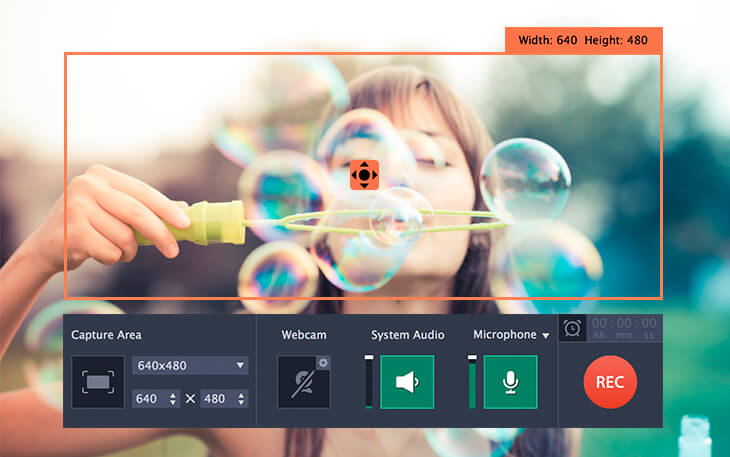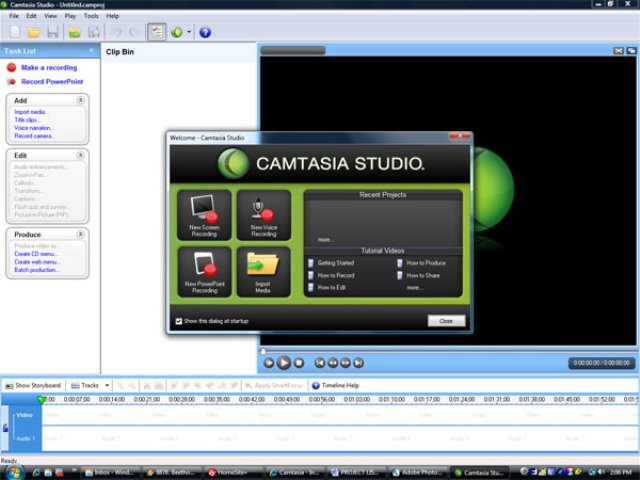


Movavi Screen Recorder can simultaneously capture the following sources when recording a video: In most cases, Movavi will automatically recognize the boundaries of the target program, but if not - the capture area can be manually adjusted. After that, the program will switch to the “aiming” mode where you can select a specific window or the entire screen. Users can start screen capture using the widget or via the Hot Key tuned in the Settings. This is the main feature in Movavi Screen Recorder thus all the key functions are here. Program interface is available in 14 languages. The traditional window view only displays settings, About, updates sections, etc. Also, this app contains access to the main functions of the program, which will be useful for those who don't like the widget. Movavi Screen Recorder also has a tray app, thanks to which the program is always active in the background. Select “Preview saved files” in tray-app to display a gallery of all previously created files. The entire widget can be minimized to one small button, moved around the desktop, or pinned to one of the screen edges. One of those users may assign a quick access to recording from webcam and microphone, or scheduler settings. The menu of the widget consists of 6 buttons. It consumes a little of system resources, so it will be useful for those who often use video recording or screenshots. The interaction is through a small drop-down menu, which is implemented as a widget, although it is an independent program. Movavi Screen Recorder doesn’t use the classic windowing scheme. Therefore, we decided to take a closer look at Movavi. Based on user feedback, its vendor was able to create a product that solved most of the common screen recording software problems.

Movavi Screen Recorder stands out thanks to its versatility and multitasking capabilities. To record what is happening on the screen, there is a separate category of programs called screen recording (or capturing) software. This applies to a large number of different types of video content, like tutorials, how-tos, game streams, software reviews, etc. streaming from the webcam and recording the display. Most bloggers create combined video content, i.e.


 0 kommentar(er)
0 kommentar(er)
